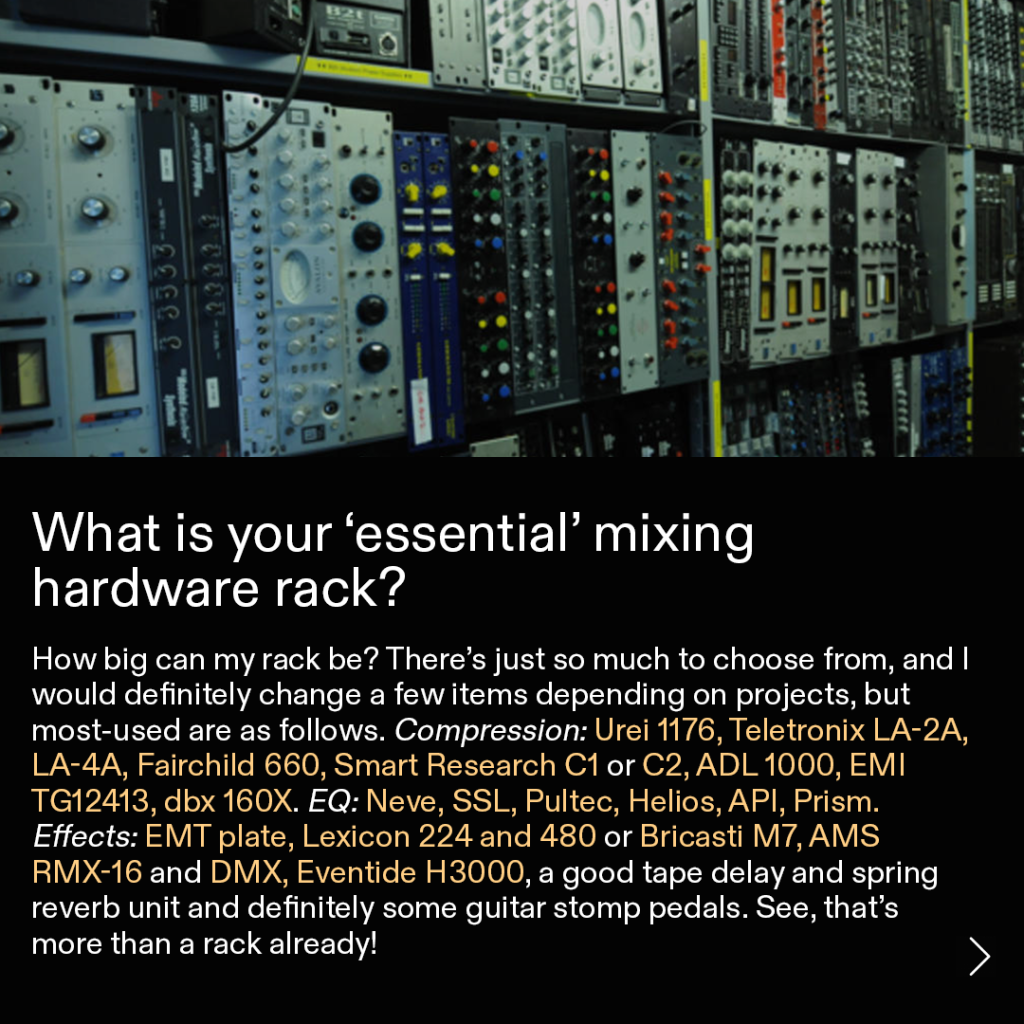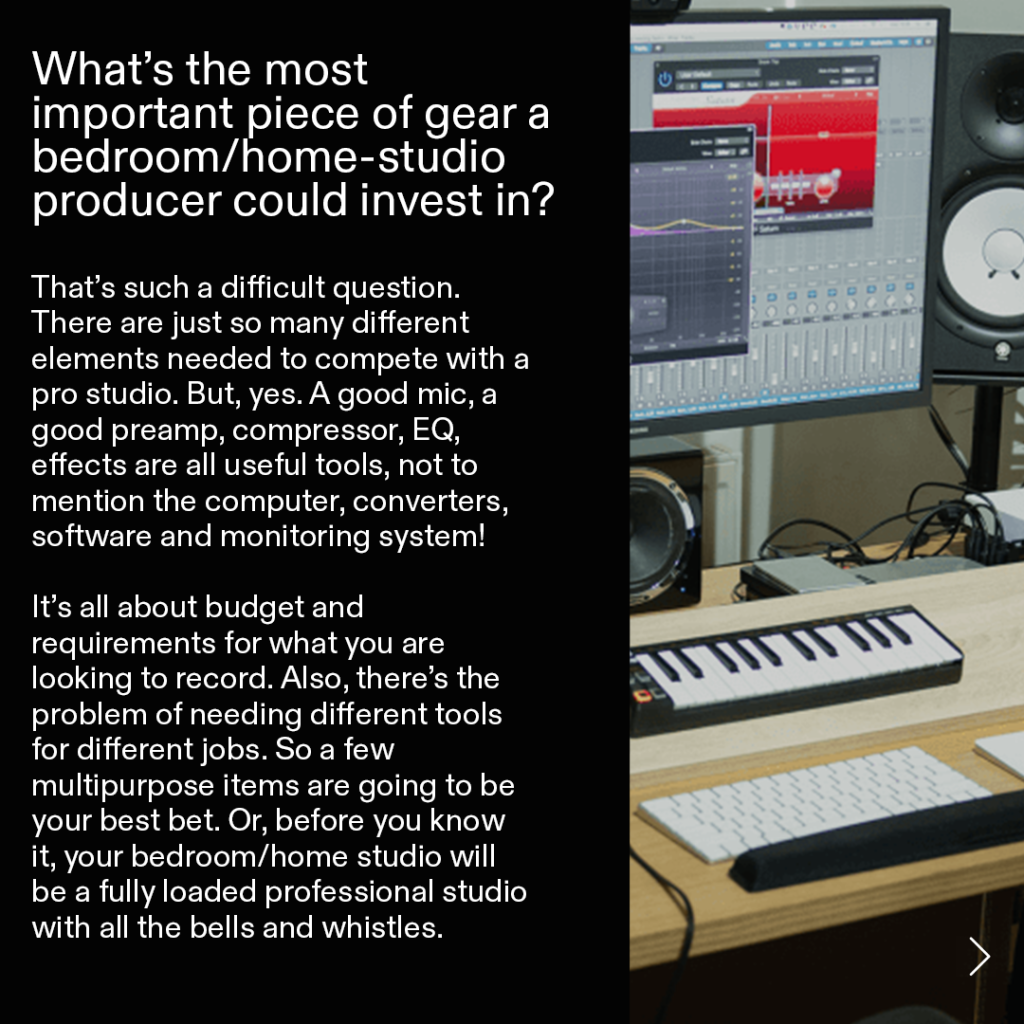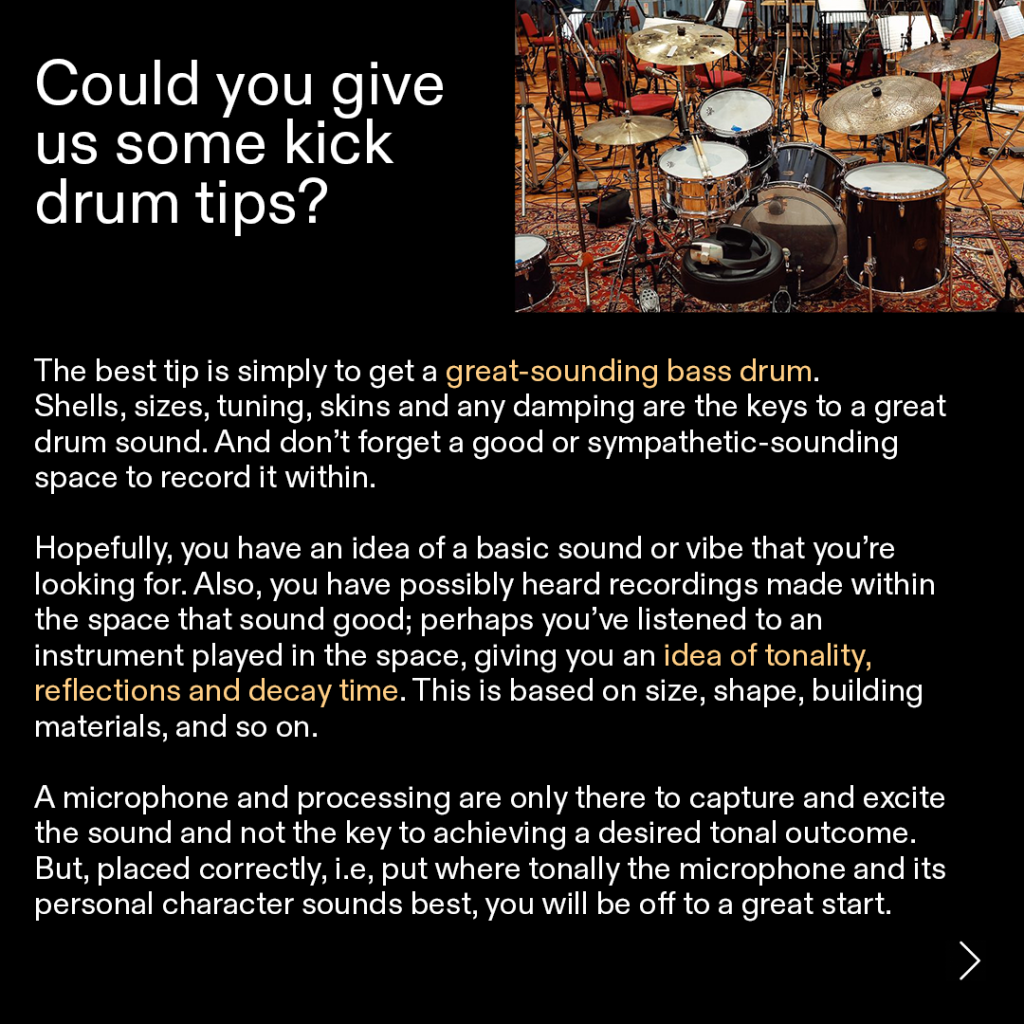We’re taking a look back at Abbey Road Studios and Music Tech’s series Ask Abbey Road, where the esteemed in-house engineers at the studios answered a variety of recording mixing and production-related questions.
In the first instalment, we call on the knowledge and expertise of engineer Chris Bolster. Chris joined the team in 1998 and has since engineered for countless artists (The 1975, Architects, Foo Fighters and Kate Bush) as well as recording the scores for huge soundtracks including 12 Years a Slave and Punch Drunk Love.
Take a look below at Chris’ essential recording tips and techniques.

What is your ‘essential’ mixing hardware rack?
How big can my rack be? There’s just so much to choose from, and I would definitely change a few items depending on projects, but most-used are as follows: compression: Urei 1176, Teletronix LA-2A, LA-4A, Fairchild 660, Smart Research C1 or C2, ADL 1000, EMI TG12413, dbx 160X. EQ: Neve, SSL, Pultec, Helios, API, Prism. Effects: EMT plate, Lexicon 224 and 480 or Bricasti M7, AMS RMX-16 and DMX, Eventide H3000, a good tape delay and spring reverb unit and definitely some guitar stomp pedals. See, that’s more than a rack already!

What’s the most important piece of gear a bedroom/home-studio producer could invest in?
That’s such a difficult question. There are just so many different elements needed to compete with a pro studio. This is why studios are there, so you don’t have to be purchasing, updating or maintaining gear continually to compete. Someone’s done all the hard work for you.
But, yes. A good mic, a good preamp, compressor, EQ, effects are all useful tools, not to mention the computer, converters, software and monitoring system! It’s all about budget and requirements for what you are looking to record.
Also, there’s the problem of needing different tools for different jobs. So a few multipurpose items are going to be your best bet. Or, before you know it, your bedroom/home studio will be a fully loaded professional studio with all the bells and whistles.

Could you give us some kick drum tips?
The best tip is simply to get a great-sounding bass drum. Shells, sizes, tuning, skins and any damping are the keys to a great drum sound. And don’t forget a good or sympathetic-sounding space to record it within.
Hopefully, you have an idea of a basic sound or vibe that you’re looking for. Also, you have possibly heard recordings made within the space that sound good; perhaps you’ve listened to an instrument played in the space, giving you an idea of tonality, reflections and decay time. This is based on size, shape, building materials, and so on. A microphone and processing are only there to capture and excite the sound and not the key to achieving a desired tonal outcome. But, placed correctly, ie, put where tonally the microphone and its personal character sounds best, you will be off to a great start.
I have tried loads of ideas over the years; AKG C547 BL, Neumann U 47 FET, Beyerdynamic M 88, Neumann U 67, Neumann TLM 170, DPA 4006, AKG D30, STC/Coles 4038, Audix D6, Electro-Voice RE20, Sennheiser MD 421 and loads of variations of the NS-10 speaker idea [This is a classic studio trick where a Yamaha NS-10 driver is wired as a microphone and placed in front of the kick. The signal is usually blended with another mic to enhance the low-frequency thump of the drum – Ed]. Mic choice is always dependent upon the sound of the instrument and any additional production notes.
I suggest always using a good amount of processing to sharpen or soften transients with compressors. Boost missing frequencies and cut exacerbated frequencies. Also, just try a few crazy ideas every now and then. For me, this sometimes involves using ribbon mics – just having them close enough to overexcite the ribbon, but not blowing them up. Or over-use of hard compression to achieve low-level saturation or distortion.
But mostly, I’m excited about achieving monster sounds through the selection of drums, skins, dampening and tunings. Mostly, I go through a Neve or SSL preamp or channel with a Neve or SSL/Smart compressor, 1176, 660, or dbx-160. For EQ, I use Neve or SSL again, or an API or Pultec.
My choice of compressor is mostly based on what’s available and/or best for achieving the type of compression desired. Mostly, I would use something with adjustable attack, release and ratio. The thing to remember is that you constantly need to be improving the overall sound, not adding something that degrades the transients or tonality. Just listen, try lots of different things and then recall these ideas in different scenarios.